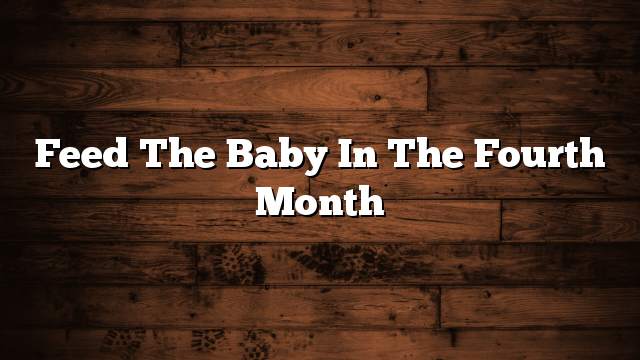Proper feeding of the baby
The American Academy of Pediatrics recommends breast feeding for the first six months after birth and is fully dependent on it, but most children between the ages of 4 months and 6 months They show willingness to start eating solid foods as a supplement to breastfeeding or breastfeeding. It is best to wait until the child is six months old before the food is served, because the mother’s milk contains enough nutrients until the age of 6 months, and this helps ensure that they have full health benefits from breastfeeding. After six months, the mother’s milk or industrial alternatives will not be enough for the child to cover his food needs, especially the iron component. However, if the mother feels that the child is ready for food six months ago, small amounts of simple solids may be introduced.
Introduce solids very early
The introduction of solids very early – ie, before the age of 4 months – leads to the following risks:
- Enter food into the airway.
- Children receive more or less of their energy and nutrients.
- Increased risk of obesity.
- stomach trouble.
Food entry is very late
The introduction of food very late – after the age of 6 months – leads to the following risks:
- Slow growth of the child.
- Iron deficiency in infants who breastfeed.
- Delayed development of motor mouth functions.
- Child aversion of solid foods.
Baby Ready Signs for Solid Foods
The child is more likely to experience solid food when the following signs appear:
- The ability to control the movement of his head and sit upright in a high chair.
- Increase the weight of the child, ie when he weighs twice as much weight at birth, the child must weigh at least 6 kg.
- The child’s ability to close his mouth around a spoonful of food.
- The child stops using his tongue to push the food out of his mouth, and start developing the food transfer process from front to back inside the mouth.
- Start showing interest in food when others eat.
- Keep most baby food in his mouth and chew it.
The right food for the baby in the fourth month
The right food for the baby at this stage is the mother’s milk or infant formula. Breastfeeding should not be stopped because milk is the main source of food and energy needed by the child. However, it is possible to start introducing some kinds of foods that are easy to digest. At first, only one type of well-cooked food should be introduced until it is soft. Here are some examples of foods that can be introduced into infant food:
The appropriate amount per day
There is no specific and precise amount of food at this age, but often the child is enough to spoon two tablespoons of mashed food, and this amount is increased gradually over time, as the mother can start feeding the child about a teaspoon of food or mashed grains such as rice, Grain can be mixed with 4-5 teaspoons of breast milk or its substitutes. The amount of fluid in children’s food is gradually reduced and gradually increased.
Tips on feeding the baby in the fourth month
- Avoid being forced to eat. If you cry when you start eating, your child may not be ready to try to eat from the spoon or he may not be hungry. You should leave him and try again after a day or two.
- Avoid forcing the child to finish the food completely, because the baby’s appetite can change from day to day.
- Avoid feeding mashed foods by bottle feeding. Feed the baby with a spoon.
- Enter one new food type at a time, and then wait 2-3 days before serving new food to make sure your child is not feeling it.
- Avoid foods that cause allergies to help prevent food allergies. These foods include: eggs, fish, peanuts and nuts. Possible signs of food allergies include:
- rash.
- Bloating or increased gases.
- diarrhea.
- Vomiting.
- Breathing problems.
- stomach ache.
- Give the child full attention when feeding him, talk to him and help him.
- Make the child open his mouth before feeding him.
- Allow the child to touch the food.
- Be patient when introducing new foods.
Signs of hunger and satiety in children
Attention should be paid to the signs of hunger and satiety in children to continue feeding or to stop, which we will discuss in detail.
Signs of Child Hunger:
- Be enthusiastic and move his lips when placed in the dining chair.
- He opens his mouth when food is served.
- Leaning forward and trying to reach the food.
Signs of satiety in the child:
- His mouth closes when food is served.
- The food is pushed away.
- Crying out of the dining chair.
Important guidelines
- Prevent the introduction of honey to baby food, because it contains bacteria that can cause a condition called Botulism, a rare but serious condition.
- Prevent children from drinking cow’s milk until the age of the year. Children under one year old have difficulty digesting cow’s milk.
- Do not give the child any solid food until the age of 4 to 6 months, because the child will not be able to digest and can suffocate.
- Do not add salt or sugar to children’s food.
- Children get all the fluids they need from breast milk or infant formula, so they do not need drinks and juices, because these drinks can cause early tooth decay.
